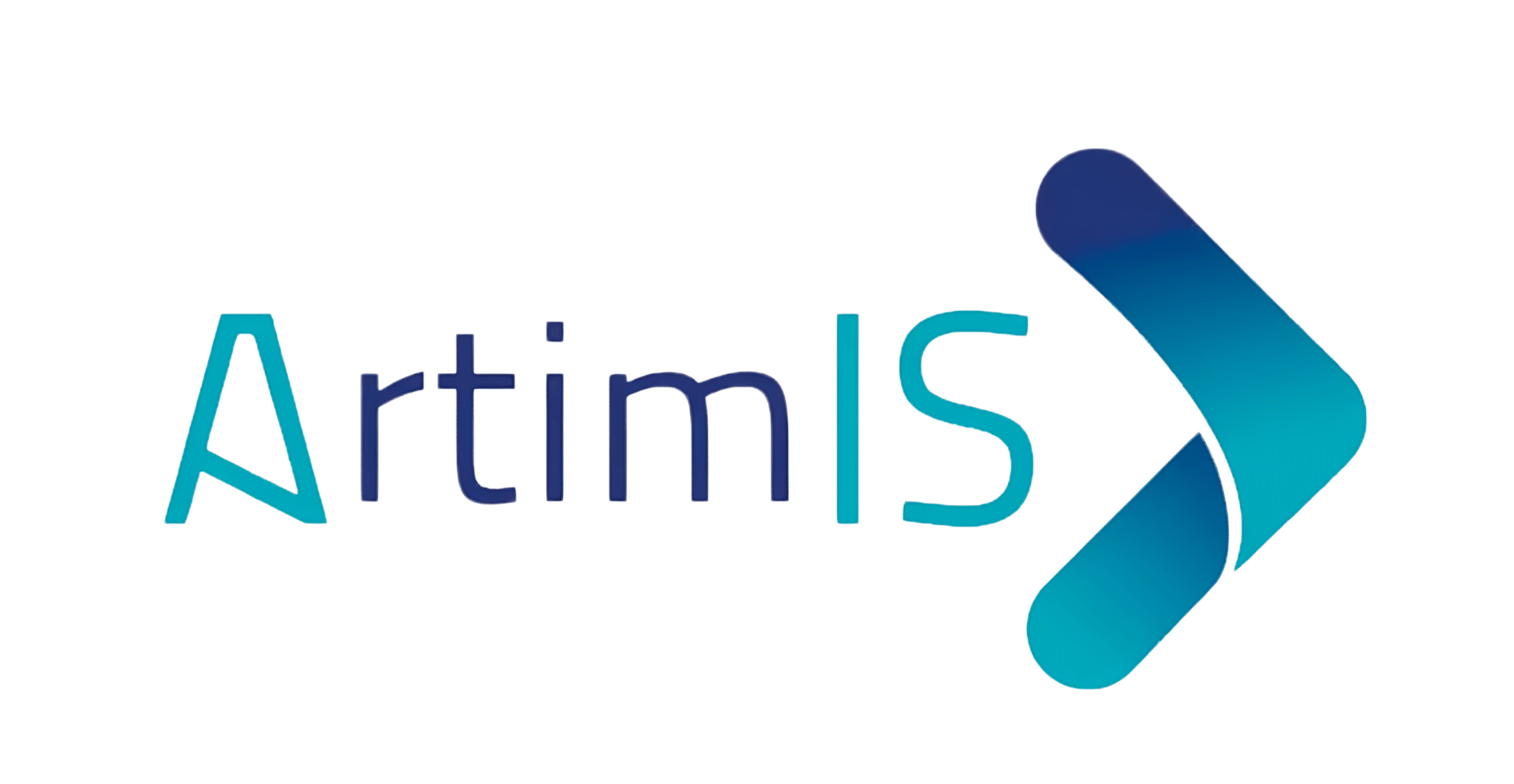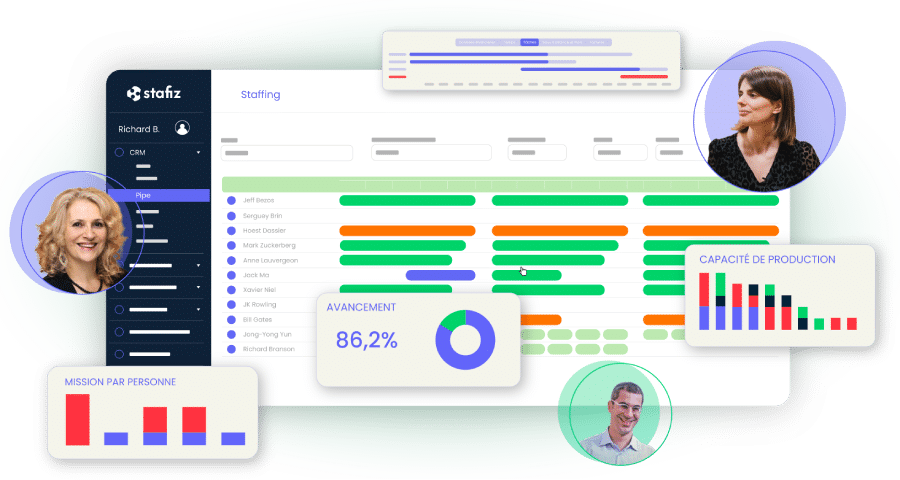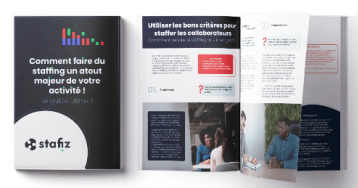Resource planning post-COVID: 4 important lessons
Resource planning
COVID-19 has revolutionized the workplace more than disrupting workspaces, resource planning within consulting and professional services firms. Remote work, in a pandemic situation, in a context of critical economic uncertainty, presents unprecedented challenges for human resources. Among them: supervision, effective communication, productivity and performance management. But also employee engagement, their advancement and their availability. The resource planning must be renewed.

Recovery will be done on a case-by-case basis and requires rethinking the different strategies for organizing resources.
Indeed, it is necessary to take a step back from events in order to draw the best possible conclusions. The Workbook "COVID-19: Workforce strategies for a post-COVID-19 recovery" built by Deloitte talks about: reflect – recommit – re-engage – rethink – reboot.
It is a question of making flexibility the new norm in order to respond to different situations with as much acuity and relevance as possible. This will involve a review of the work structures and the organization of the teams.
- Centralize communication with and between employees for better connectivity
- Track performance to optimize it
- Maximizing talent to increase productivity
- Better visibility for better responsiveness
1. Centralize communication with and between employees for better connectivity
Working from home reinforced the need for centralized communication spaces dealing with the progress of the various projects, but also the well-being of the teams and their availability. Management needs to have better visibility on the workload of its teams: who is available, at what time, with what skills.
The resource planning has become more flexible, as have the employees themselves. The LSE Business Review notes an increase in the willingness to collaborate, to be flexible and quick to adapt. Faced with this evolution, the danger of micromanagement is looming. Managers who, since it is out of reach, lose confidence in their staff and make the teams lose productivity.
Thus, the solution is in a centralized tailor-made platform connecting employees and reporting on their evolution live. This platform must make it possible to manage the project as a whole to see the progress of the project and the overall workload of the teams, without micro-managing the employee.
In addition, thanks to COVID-19, we have discovered that talents and projects are not to be restricted geographically. Consulting and professional services companies can extend their expertise outside their area of proximity. But only if they have the right communication, evaluation, supervision and monitoring tools to manage their resource planning.
2. Track performance to optimize it
With the dispersion of the workforce, a tailor-made overview, based on explicit and relevant data, is fundamental to monitor the performance and commitment of teams. A thorough understanding of the various activities allows for the appropriate positioning and organization of timetable tasks over the long and short term. On the other hand, spotting gaps in schedules allows you to optimize them.
As a result, event monitoring and reporting have never been more crucial. A solution like Stafiz allows teams to be placed on specific projects and tasks. By letting the employee organize his or her schedule and resource planning As he sees fit, the platform allows him to indicate when the employee believes that he or she will have completed the project or task and can be staffed again on a project.
Finally, employees must be able to account on a daily basis for their performance as well as for each of their difficulties; and this in detail and with attentive ears.
Consulting and professional services companies are particularly concerned by these issues. Their work and exchange spaces can extend from the office, to the employee's home but also, and above all, to the customer's home. This delicate and frequent geographical flexibility leads to distancing and multiplies communication difficulties. Report on your performance, clearly explain your schedule, work in a team, etc. are becoming much more complex in these areas and require an urgent response
Stafiz helps you manage your projects and your resource planning with more efficiency thanks to more visibility on your employees and their workload, and on performance indicators.
3. Maximize talent to gain productivity
In addition, it is necessary to identify and restrict the roles of each person in order to maximize individual and collective performance.
In fact, 40% of employees report carrying out missions on a daily basis that do not correspond to their job description. As a result, this scattering leads to a dramatic waste of talent. And possibly a loss of efficiency on the tasks in question and a reduction in the time devoted to missions that really match the employee's profile.
This dispersion has been accentuated with COVID-19 and working from home. This is why the search for profiles in Stafiz takes into account the criteria of availability, roles, skills. But also experience, as well as the wishes of employees: why not try to staff projects also according to the employees' appetites when possible.
A large French banking group that uses Stafiz asks employees to specify the types of projects that could help train them and asks planners to take this into account.
The focal point of the resource planning seeks to answer "When, where and how to secure and mobilize talent, from inside or outside the company, in the face of this or that workload and this or that project?" It is therefore becoming essential to analyse and assess the availability of capacity and talent.
Ask yourself the right questions:
- Internal offer: be careful not to disperse the missions
- Outside offer: Where is the talent? How to find and solicit it? At what cost?
- External demand: search for financial benefit for the company
Consulting and professional services firms, in particular because they are confronted with as many specific situations as there are clients and do not fall into a protocol routine, have everything to gain by maximizing the allocation of each talent. What talent for which project? For how long? What for?
4. Better visibility for better responsiveness
A crisis, social or individual, like COVID-19, has a direct impact on the resource planning and work practices. The responsiveness of the structures is decisive in order to deal with them effectively, quickly and in a relevant way, but also in order to learn from each of these difficulties.
Consulting and professional services firms need to invest in tools that enable and facilitate working from home and virtual collaboration among their employees. Their bandwidth will have to be evaluated and updated to support these new deployments within their network. Periodic stress tests will need to be carried out on this network and alternative solutions will need to be identified for each critical task that cannot be performed at home.
These still unusual reflexes will require great flexibility on the part of companies and individuals. It is a question of completely reorganizing the management of resources and the resource planning.
Through a redefinition of work processes and the norm, COVID-19 calls on consulting and professional services firms to redefine, 'reboot' to draw inspiration from the Workbook published by Deloitte, the organization of their resources and their resource planning. The focus is on connectivity between employees, at all levels and even remotely, on monitoring, evaluating and supervising everyone's performance, on intelligent talent maximization and on double responsiveness.
Stafiz helps you gain visibility and better manage your resource planning and your project progress with real-time data. Stafiz is a SaaS for managing the resource planning, project management and Business Intelligence. This way, budgets and margins are always respected and you make better decisions for your business.
To learn more about the Stafiz platform, request a demo.
You might be interested in other articles

Optimizing Customer Relationship Management (CRM) with Stafiz: the case of Artimis
Natalia Duarte...

